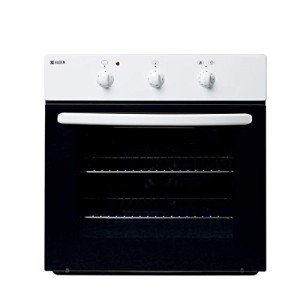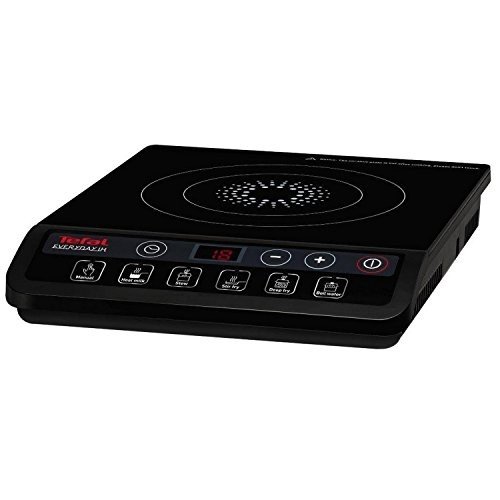 Types of Ovens
Types of OvensHobs are at the heart of any kitchen, whether boiling the kettle or roasting chicken. They come in a range of styles and sizes, and there are a variety of hob types to choose from, including electric, gas, ceramic and domino.
Electric hobs are simple to clean and have smooth surfaces. However they take a long time to heat up or cool off. They are also only compatible with flat-bottomed pans, and may include heat indicators.
Ceramic Hobs
Ceramic hobs are a great way to cook. They provide a chic and sleek aesthetic and are also simple to use. They function by using heating elements under the glass surface, which is tempered, to disperse heat efficiently and evenly across your cookware. Ceramic hobs are available in a variety of styles ranging from traditional gas burners to contemporary electric zones The majority of them feature a black glazed finish that is hard-wearing and resistant to scratches and chips.
These hobs have flat, smooth surfaces that are easy to clean. You can clean them with any standard kitchen cleaner. These hobs do not have open flames, therefore they are safer for families with children or elderly relatives. They typically come with rotary or touch controls to ensure safety, as well as a residual temperature indicator that warns you if an area remains hot even after removing the pan from the oven.
They cost more than a basic electric cooker but are less expensive than an induction model and can be a good choice for those who do not have gas at their home. Similar to induction models are more efficient if you use cookware with flat bottoms that maximize the surface area of contact with the elements. The heating system won't recognise pots and pans that aren't the exact same size as the element.
It is essential to hire an electrician to install your ceramic hob. Electricity can be dangerous if not done properly. Failure to have your ceramic stove installed by a professional could invalidate the warranty and result in future fire hazards. It's a small price to pay for peace of mind and ensuring that your new cooktop is safe for use.
Gas Hobs
A gas hob, or a gas cooktop, is powered by liquefied or natural petroleum gas (LPG) and typically installed in your kitchen counter or unit. The burners can be lit manually with matches or lighters. They are controlled by knobs to adjust the heat during cooking. Gas hobs are more efficient than electric models, and they can be used to cook in any way.
Gas hobs have the disadvantage of needing a gas supply and ventilation system to function. This means they are more expensive to set up and could not be as efficient as induction hobs. They also pose a safety danger since they are powered by gas that is flammable and require regular maintenance to check for gas leaks.
Another option that is popular is an induction hob that employs electromagnetic technology to instantly heat your pans and allow the water to boil faster than gas models and allowing precise temperature control. Induction hobs can only be used with induction-compatible pots and can be more expensive than other kinds of hobs.
Other alternatives include a ceramic glass hob, which has sleek design and is easy to clean. It is available on both electric and induction models and is usually the best choice for those who prefer an elegant, modern look to their kitchen. It's important to remember that this type of stove can become very hot to the touch and can take longer to cool and heat down compared to gas or electric models.
A freestanding gas stove or hob is a more traditional option that's ideal for kitchens that are larger and open-plan layouts, where it can act as the focal point. It requires a dedicated space and is typically fitted by a professional who will be able to handle the installation process, which entails handling gas connections that can present risks if not handled correctly.
Hobs Induction
A popular option for those looking for a sleek and efficient way to cook, induction hobs utilize electromagnetic induction technology to warm pans. Under the glass surface are coils that when a pot that is compatible is placed on them, emit a magnet field that creates an electric current to pass through its base. This produces heat that quickly warms the food within the cooktop while it remains cool to the touch.
Induction hobs are also renowned for being more energy efficient than traditional models, whether they are electric or gas. As they only generate heat directly where a pan is placed this helps reduce the amount of residual heat that is wasted and helps to reduce energy costs. Many induction hobs also come with a safety feature which stops the stove if no pan is detected or if the pan is removed, thereby reducing the amount of waste.
Induction models, like gas hobs, come with various types of controls including dial, slide and touchscreen controls. A slider control is similar to an ordinary cooker knob and allows you to adjust the power level by one simple motion. A dial control is similar, with an enormous dial that can be rotated to select the setting you want. Touchscreen hobs, which are typically found on more expensive induction models that have advanced features, are another option. These have a clear digital display which makes it easy to read and alter settings.
As an extra piece of tech, induction hobs can be fitted with extractors built-in, which work together with the hood to draw steam and smoke out of the kitchen and stop condensation and mould. These can be operated separately from the other appliances and typically activated with sensors or buttons or sensor, and can be programmed to automatically turn on when a pan is placed in an area for cooking.
Induction hobs are limited due to the requirement for special cookware to function. The bottom of the pan needs to have a magnetic base in order to be able to generate the electromagnetic induction process and even then, it's not guaranteed to work with all models. Cast iron, stainless-steel that has magnetic bases, and certain nonstick pans can be used with induction stoves. However, you should always consult with the manufacturer to make sure that your pan is compatible before purchasing the model.
Domino Hobs
Domino hobs are ideal for those with a smaller kitchen who still want the flexibility to experiment with different cooking styles. You can build an open kitchen by mixing and matching two-zone gas, ceramic and induction domino stoves and even a Siemens grill.
Solid plate hobs are the simplest type of hobs. They make use of sealed plates made of metal to heat electrical elements, which then heat your cookware. These are easy to use, affordable and long-lasting. They may take a while to cool down and heat, and are more expensive to operate than other types of hobs.
A popular alternative to solid plate hobs is the halogen hob, which utilizes a row of halogen bulbs under a glass ceramic to generate heat. This type of hob is fast and responsive due to the fact that the bulbs are bright and transfer heat directly into the pan. Halogen hobs consume less energy and can be damaged by scratching the surface.
Induction hobs are a new and becoming increasingly popular type of hob employing electromagnetic technology to heat the cooking areas instead of the surface. Induction hobs are environmentally friendly and cost-effective than other hobs, however they can be more expensive and require induction compatible cookware.
Ceramic hobs are another stylish and modern option with their flat design that blends seamlessly into the worktops to add an airy feel to your kitchen. The surface is easy to clean and does not require any special cleaning products. Some models sport a chic frameless design and can be customized with dials or touch controls according to your preference.
The most important features to look out for when buying a brand new hob include overheat protection. This switches off the heating element if it reaches an unsafe temperature. Check for residual heat indicators which will warn you of an overheated hob. A pause feature allows you to temporarily deactivate all cooking zones in use. This can be useful if you need to leave the kitchen for a time.









